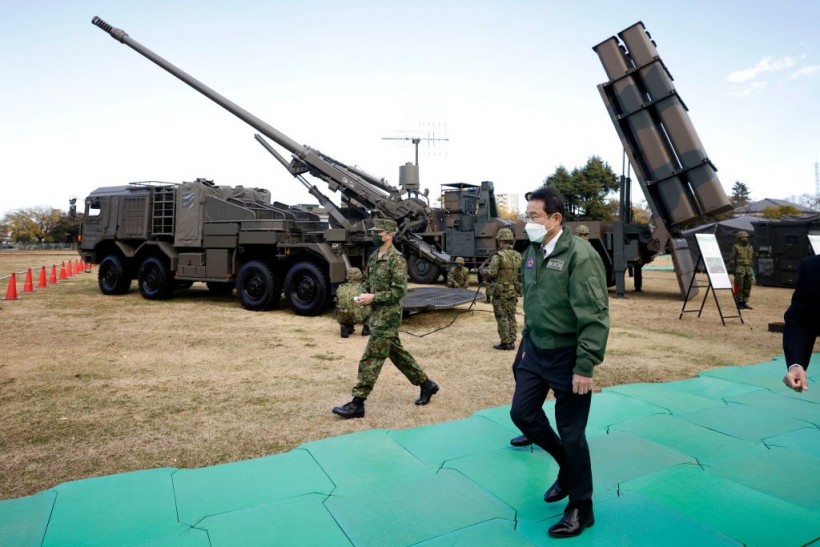Tokyo now seems determined to rebalance the regional threat environment by improving the reach of its own Type 12 missiles.
A report from The National Interest specified that the Japan Self-Defense Force is supposedly only concerned with the Japanese soil's defense and doesn't have any offensive function.
The JSDF, as an island nation, is strongly orientation around maritime defense and naval power as a shield from sea invasions.
Nonetheless, improved sensors, propulsions systems, and communications enable land-based anti-ship missiles to impend targets hundreds of miles far from a shoreline.
Such weapons go beyond coastal defense and creep up ships across the littoral waters' broad swaths. More so, these technologies are changing the future naval conflicts' outlook.
Now, China, Japan's historical rival, and previous Japanese invasions have taken the lead in developing "far-reaching, land-based anti-ship and ballistic missiles," as indicated in this report.
ALSO READ: Elon Musk Plans to 'Chomp up' Space Junk Using SpaceX Starship as Garbage May Clog Earth's Orbit

Japan's Prime Minister Fumio Kishida walks past a Japan Ground Self-Defense Force (JGSDF) Type 19 155 mm wheeled self-propelled howitzer and a Type 12 surface-to-ship missile as he inspects equipment during a review at JGSDF Camp Asaka in Tokyo.
Type 12 Missiles
Essentially, the Japanese Ground Self-Defense Force or Group JGSDF operates the Type 12 anti-ship cruise missile on eight-wheel trucks.
In addition, a Type 12 battery usually comprises four ammunition carriers, four launcher vehicles, two radar vehicles, and two more trucks with communication systems and fire control.
Four batteries are presently concentrated at the Kengun Kumamoto, Japan's 5th Surface-to-Ship Missle Regiment. A pair of additional batteries, with a third one arriving soon, are stationed at Amami Oshima, Ishigaki, and ultimately, Miyako, Islands.
Each Type 12 launcher carries six missiles that weigh 1,500 pounds that are cruising towards a targeted vessel's position through a combination of GPS, inertia, and terrain-contour mapping for navigation.
The missile skims approximately 20 feet above the sea, stimulating a high-resolution active digitally scanned array seeker coming from the AA-4B air-to-air missile, which can identify if a ship is a suitable target and home in for the kill.
Nevertheless, Type 12 has a limitation compared to the latest anti-missile of China. Its range is just 124 miles.
Plan to Advance Capability with an Improved Model
Japanese warships and airplanes already utilized a variant of this missile, also known as Type 17, with double the range at 250 miles.
However, the JGSDF plans to leapfrog such a capability with the improved Type 12-Kai model, as detailed in a Naval News report, which enhances a range of 560 miles.
Furthermore, Type 17 is scheduled for completion of its development by 2025. Furth upgrading to more than 900-mile range is believed probable. That would approximately match the range of the DF-21D anti-ship ballistic missile.
Nonetheless, higher-flying missiles can be detected at farther distances on radar, providing the targeted ship with more warning to try shooting them down.
The Type 12 Kai has been improved for a decreased radar cross-section to alleviate this. It will possibly be programmed to dive to low altitude to the flight's final stage.
Type 12 is anticipated for deployment on Japan's F-15-derived Mitsubishi F-2 fighters. An air-launched Type 12 could feature a greater range due to starting with a speed at altitude boost and could approach target as well, from less foreseeable vectors, NewsDesk indicated in a similar report.
Lastly, the Japan Maritime Self-Defense Force P-1 maritime patrol planes reportedly can carry eight Type 12 missiles and the present model.
RELATED ARTICLE: Russia Anti-Satellite Weapon Trial: How Dangerous is This Missile Test for Humans in Space?
Check out more news and information on Tech & Innovation in Science Times.














